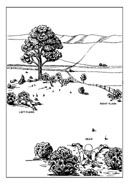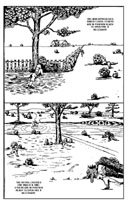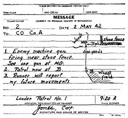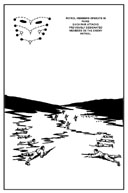rifle's capacity for putting down a large volume of
fire makes it especially useful for this purpose. Meanwhile,
other members of the squad move forward, take up firing
positions closer to the enemy, and, by their fire, cover the
forward movement of the rearward members. By this combination
of fire and movement, the squad advances close
enough to capture the hostile position by assault. (See pars.
145 and 146.)
- When the squad begins firing, the method of its further
advance is determined by the effectiveness of the hostile
fire and by the terrain features affording cover. The squad
must take advantage of every irregularity of the ground to
provide protection against hostile fire. Complete fire superiority
is required for men to advance over open ground
in the face of an unbeaten enemy. The squad can advance
as a unit only when completely defiladed from hostile small-arms
fire or when the hostile fire is kept neutralized by the
fire of other units or of supporting weapons. Therefore,
the squad usually works forward by irregular or successive
advances of individuals.
- Rushes by individuals or small groups are used to move
from cover to cover across short stretches of terrain. Even
in very open terrain the well-trained rifleman will be able
to locate and use all kinds of limited cover, such as slight
depressions or rises. However, in very open areas, an advance
will usually necessitate overwhelming fire superiority
with consequent longer bounds between firing positions. To
leave a covered position, make a short rush, and drop into
a position which affords no protection from enemy ground
fire, serves only to increase losses without commensurate
gain.
- The automatic rifleman supports the rapid advance
of other members of the squad from flank positions. Because
of the difficulty of maintaining an adequate supply of ammunition,
the fire of automatic rifles is conserved to the actual
needs of the situation. Thus, when the fires of individual
riflemen serve to accomplish the desired effect, they are used
in preference to the automatic rifle.
- The squad increases its rate of fire during periods when
any part of it or of an adjacent squad is in movement.






